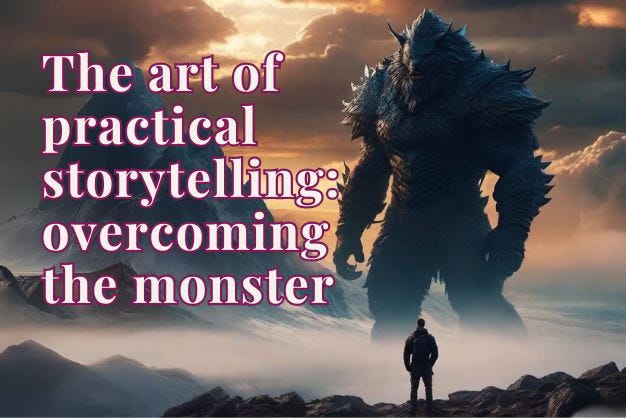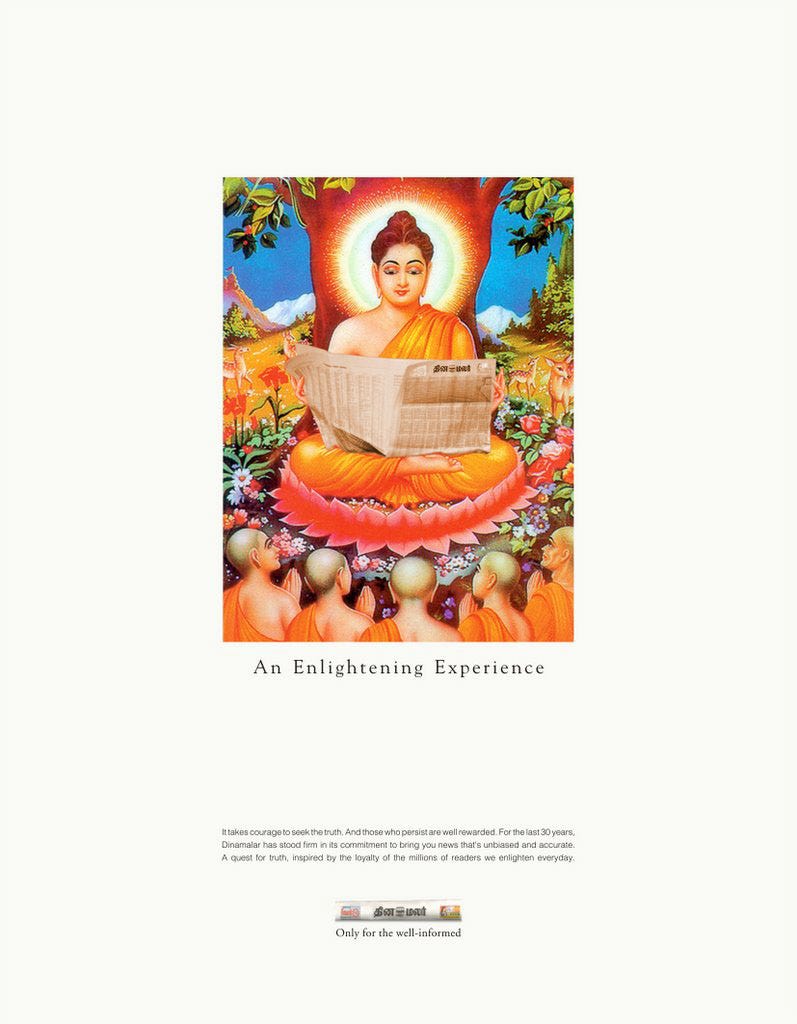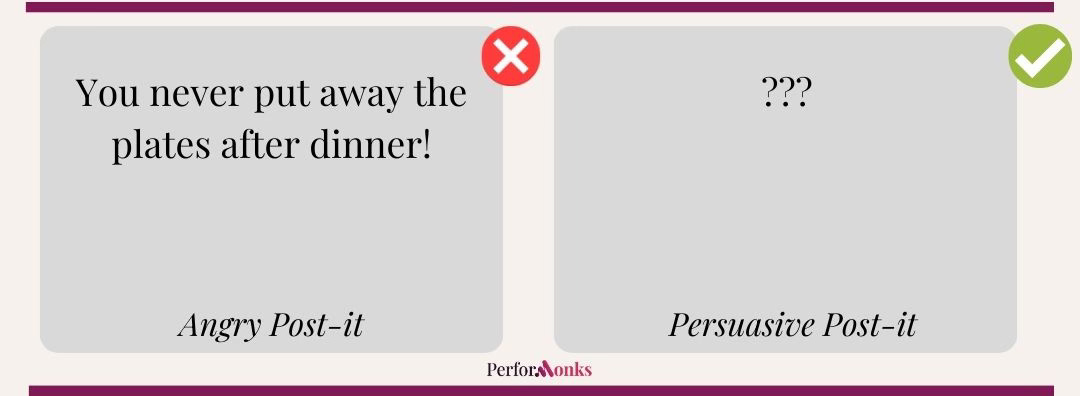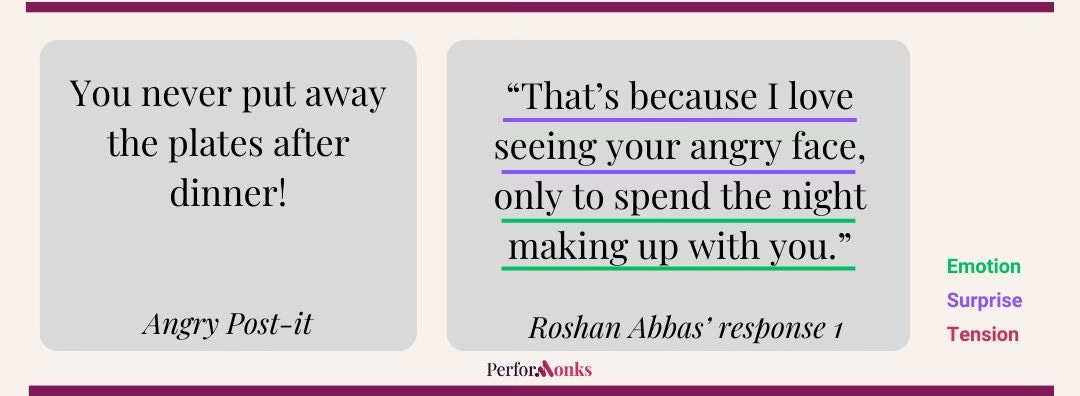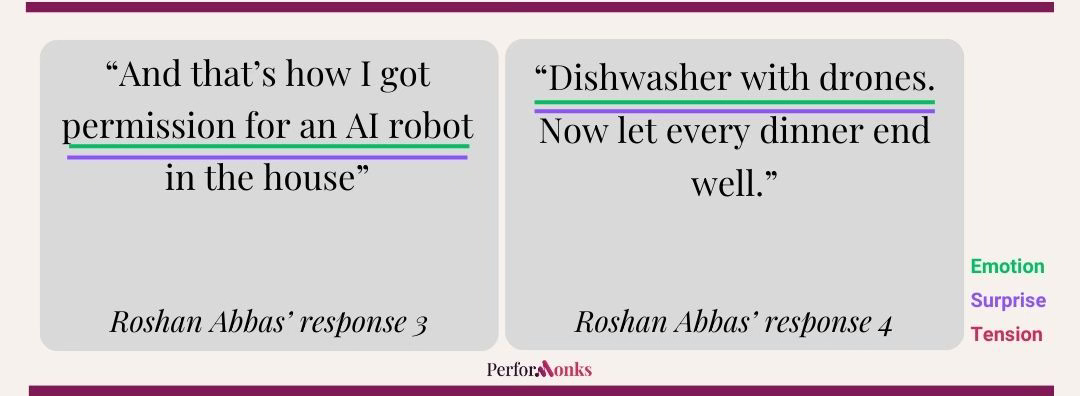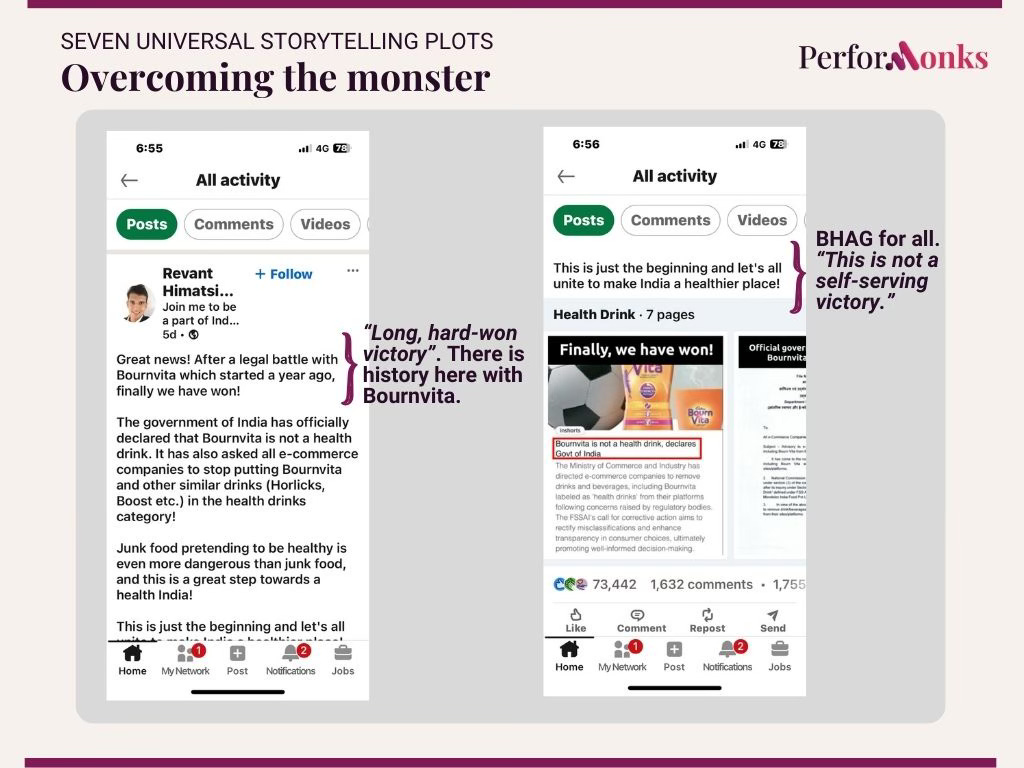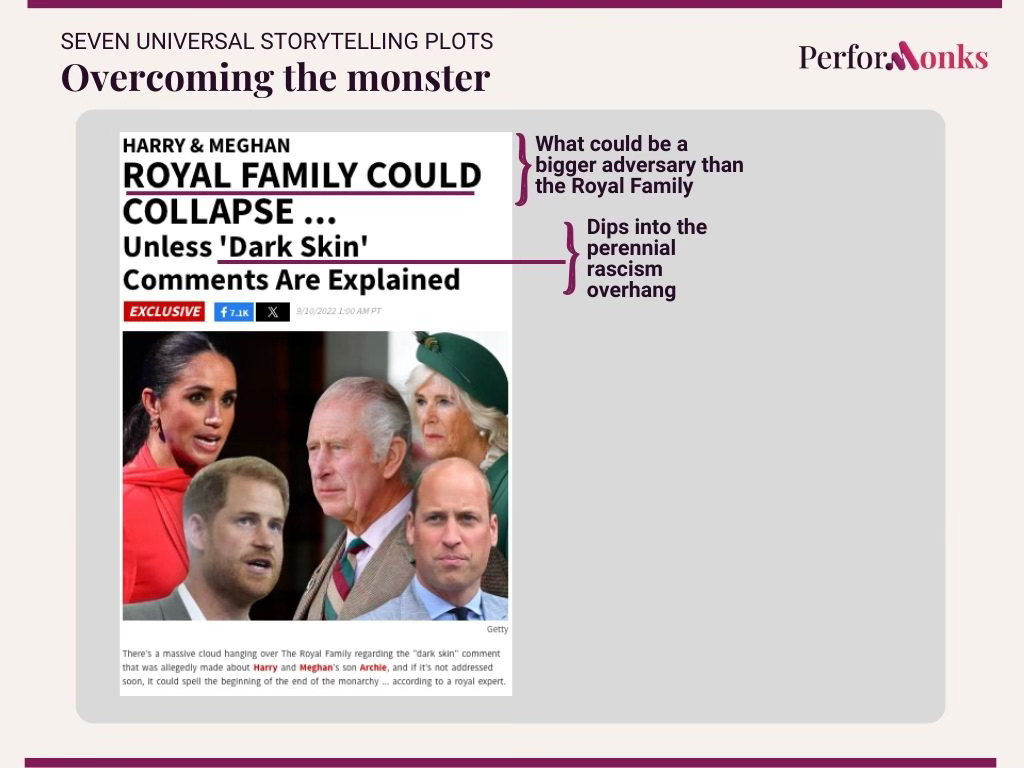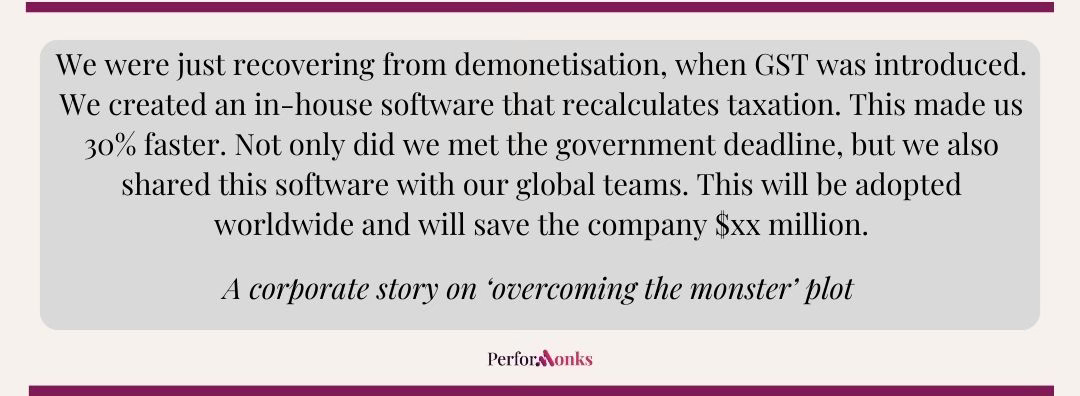The art of practical storytelling: overcoming the monster
Once you know its ingredients - an underdog, an insurmountable villain and a win against all odds - you will see this story plot everywhere
Practical ideas on how to master brand strategy. Performonks goes to 4,169 curious marketers and founders - join them here. Find The India Playbook here.
Dear readers, I missed sending last week’s newsletter because I was attending a workshop. Note to self —> start writing ahead of time!
While away, I thought about mastery, EST and Tanmay Bhatt. I mulled over a reader’s responses to the previous newsletter’s question. Also, I realized that we find story plots everywhere, all we need to do is to adjust our lenses.
That’s why this one is a longish read (even more than my usual :-)).
Hydrate your eyes and dive in:
Storytelling mastery comes from becoming compulsive-obsessive about the EST cocktail
The cult of ‘Chalu’ storytelling
Why ‘Shallow Creativity’ is not Tanmay Bhatt’s fault
EST in our daily lives - four responses to last edition’s question
Recipe of good storytellers
Today’s story plot- overcoming the monster
Revant Himatsinka (Food Pharmer) vs. Big Bad Corporates
Megan and Prince Harry vs. The Royal Family
Dove’s Real Beauty positioning
Apple 1984
Sports and Lagaan
Corporate example
TL:DR
1. Storytelling mastery comes from becoming compulsive-obsessive about the EST cocktail
Mastery is the result of becoming compulsive-obsessive about a subject. That’s why, to master storytelling, obsessively filter everyday interactions through the emotion-surprise-tension (EST) sieve.
Once we do that, we start seeing stories everywhere.
I started seeing a lot of advertising that skewed more towards ‘surprise’ than ‘emotion’ or ‘tension’.
I call it ‘chalu’ (quick and dirty) storytelling.
1a. The cult of ‘Chalu’ storytelling
Creativity is, in essence, a blend of two unrelated things. When we lean into creativity, we get ‘surprising’ stories.
For example, in this print ad by a newspaper, The Buddha reading a newspaper is so surprising that we notice it and instantly conclude that it must be worth reading.
In this case, the client lucked out and ‘chalu’ storytelling worked.
Good storytelling creatively resolves a consumer tension or an unsatisfied emotion.
So, when client briefs lack a fleshed-out emotional territory or a deep unsaid consumer tension, creative teams are forced to resort to shallow creativity, i.e., creativity that’s not anchored to a deep behaviour-changing insight.
It is true that clients get the advertising they deserve.
That’s why. I don’t blame Tanmay Bhatt.
1b. Why ‘Shallow Creativity’ is not Tanmay Bhatt’s fault
This might be one reason why new-age brands that don’t have strong marketing teams repeatedly get bombastic, bizarre advertising.
Case in point: the same Tanmay Bhat delivers creative but also insightful and hard-working advertising for Subway but leans heavily into shallow creativity for Cred.
1c. EST in our daily lives - four responses to the question from the last edition
At least we try to incorporate EST into our corporate life…. but we sleepwalk through most of our home life. And those tricky, prickly daily situations we all deal with? Without a storytelling mindset, we have about as much impact as a feather landing with a thud on Thor’s hammer.
That’s why, in the previous newsletter, I had invited readers to respond to this common household conversation.
To my pleasant surprise, Roshan Abbas, the OG of storytelling, sent in not one, not two, but four responses.
Roshan has been telling stories and supporting storytellers (through Kommune) before I knew storytelling was a thing. He’s even written a book on storytelling! It’s called Speechless-what would you say if your life depended on it (now that’s a hook line with the EST cocktail in full measure).
That’s why his responses are a masterclass in EST. Let’s see how.
Response 1:
The first response is cheeky and romantic, guaranteed to diffuse the spouse’s tension.
Response 2:
It destabilises the spouse just for a microsecond. Once she’s over the initial tension, she feels a surge of gratitude, and her perspective shifts to what really matters most.
I loved this one SO much because storytelling is the art of changing people’s minds, and this response delivers that. It’s a risky move, but if it works, it might end this pesky daily back-and-forth forever.
Responses 3 & 4:
The next two responses are in the vein of ad copy that riffs on the ‘not putting away dishes’ problem statement.
I like that they take a household problem and give us food for thought for a new product innovation or the seed for a new communication campaign.
1d. Recipe of good storytellers
I know for a fact that Roshan penned these responses in less than 10 minutes. And that, dear readers, is the recipe of good storytellers -
generate many different ideas,
don’t self-censor,
and be fast. If you give yourself too much time to think, you will start overthinking. Remember, overthinking is the Dettol that kills all 100% idea germs (none of that 99.9% business here).
Notice the use of tension in Roshan Abbas’ responses. Often, we find it easier to infuse emotion or surprise into our stories, but we resist tension. We think ‘tension’ is a bad word. We associate it with fights, stress, or having to say something nasty.
But our first story plot - ‘Overcoming the Monster’ - is grounded in tension.
2. Overcoming the Monster
Overcoming the monster stories are about winning against all odds. David vs. Goliath is its most commonly known legacy example, dethroned by present-day Ukraine vs. Russia.
There are a few necessary conditions that make this story plot work.
The monster needs to be invincible. The adversary must be big, strong, and scary—think Jaws-Darth Vader-Voldemort-The Night’s King level scary. Without a strong adversary, there’s no challenge to overcome.
The hero needs to be an underdog. As strong as the adversary is, the hero must be equally weak, confused and flawed. This storyplot balances on a string taut with tension - if the hero can easily overcome their enemy, there’s no tension.
How the underdog wins is more important than the win itself. J.K. Rowling earned millions because the whole world wanted to know how Harry Potter, the poor little orphan boy, defeats the world’s most powerful master of dark arts. We all know that the underdog will win. Yet, we stay engaged because we want to see the hero’s ingenuity, gumption, and secret weapons in action.
Here are a few examples.
2a. Revant Himatsinka (Food Pharmer) Vs. Big Bad Corporates
This food influencer has built his whole career on this story plot.
The underdog: a lone individual who gave up his American dream to fight the good fight for a healthier nation.
The villain: big bad corporates with fat bank balances, global might and legal machinery hellbent on profiting from the sale of unhealthy products.
The surprising yet hard-won victory: Notice the use of language in the post that fuels the narrative of the underdog taking on corporates, with only truth and resilience as his tools.
2b. Megan and Prince Harry Vs. The Royal Family
This is a story full of symbolism.
The underdog: the actress-turned-princess is hardly an underdog. But the minute you introduce race into the conversation, she becomes one.
The villain: the royal family, already under the scanner for not doing any ‘real work’ and being out of touch with the times.
The ‘race’ conversation that refuses to go away: here, just bringing out the ‘truth about the racist royal in-laws’, was a win for the underdog. The ingenuity lay in breaking this news through Oprah - the most credible interviewer we know, who herself happens to be Black.
My goal is not to support or vilify any side in these examples but to illustrate that all language, conversations, news, and dramas surrounding us fall into one of the seven-story plots.
All we need to do is to notice.
As I write this, I realize that even the world-famous Dove’s positioning follows this storyplot.
2c. Dove’s ‘Real Beauty’ positioning
While this is just an India-specific example, all its purpose advertising follows the same formula.
The underdog: the average woman or girl weighed down by unrealistic expectations of beauty.
The villain: societal expectations, mimetic desires fueled by media, and the consumer’s discomfort in her skin (pun very much intended). Yes, in this plot, the villain can also be internal to us.
The win: great brands offer solutions, but the winner is always the consumer. Here, Dove offers a range of moisturising, gentle products for her every need. But more than that, the brand stands shoulder to shoulder with the underconfident, scared part of her, whispering in her ear, “You’re beautiful just the way you are.”
2d. Apple 1984
Dove, made an enemy out of a timeless cultural truth. Revat made big corporate the enemy. Apple’s 1984 ad did both. A ‘culture of lack of progress’, epitomised by a very successful and ossified IBM, is the big bad enemy here.
At this time, both Apple and Steve Jobs were still underdogs… who dared to take on the enemy with the power of their innovation.
I am sure you all have seen this ad, but sharing it here anyway.
2e. Sports and Lagaan
Be it war or sports - there is no greater enemy than the opponent.
Entire nations come to a standstill when rival football clubs play the season finale or during an India vs. Pakistan cricket match.
When we give gargantuan proportions to the evil monster we must defeat, victory tastes sweeter. If, on the other hand, we lose, we tell ourselves that ‘the boys played well’, but the monster was just too strong… at least we live to fight another day.
And, of course, Bollywood movies dramatise the destitute underdog’s hard-won victory to Oscaresque proportions - the underdog is all set to lose until the very last ball is bowled and caught.
Here’s the clip of the nail-biting finish from the film Lagaan. [Side note: Wikipedia tells me that Lagaan made $1.3 billion globally in 2001. Was Lagaan 2001’s Barbie?]
By the way, Barbie follows the same story plot—Barbie and Ken overcome the ‘archy monster’—patri-archy and matri-archy.
Here’s an example of what this story plot could look like at work.
2f. Corporate examples
Difficult regulatory conditions and a trigger-happy government—demonetisation and the GST regime—are the villains.
The finance team is the underdog. Their win goes above and beyond just meeting the regulatory deadline.
Notice the ‘show and tell’ here. Good stories don’t tell the emotions, they show them.
If we had said this instead, ‘We tackled the challenge with hard work and resilience. We were also very innovative in our approach.” You know we would not have had any impact.
3. TL:DR
To summarise, you can apply this story plot at work to motivate yourself or your team. Remember:
Create a monster. It could be internal capability gaps, external competition, or a cultural movement.
Grow the monster. Test out a smallish monster to see if it motivates the team. Keep increasing the monster with each win. Be careful to right-size the monster —if it’s too big, the team may feel overwhelmed and quit the game altogether.
Highlight your ‘underdogness.’ Find things that make you the underdog. Is it the size of your budget? Newness of your business? Or that none of you are from an IIM?
But also arm yourself for a win. Remember, the goal is to motivate action and innovation, not to descend into a victim mindset or a blame-and-shame game. Quickly move to brainstorming strategies for winning. Find the ‘prize’ that the team will be motivated to fight for —survival for Ukraine, truth for Revat, unselfconscious beauty for Dove, beating those IIM snobs, glory, etc.
That’s all for this story plot.
I learnt a lot while writing this one. I hope you did, too.
Next week, we will look at the second story plot.
Thanks for reading.





